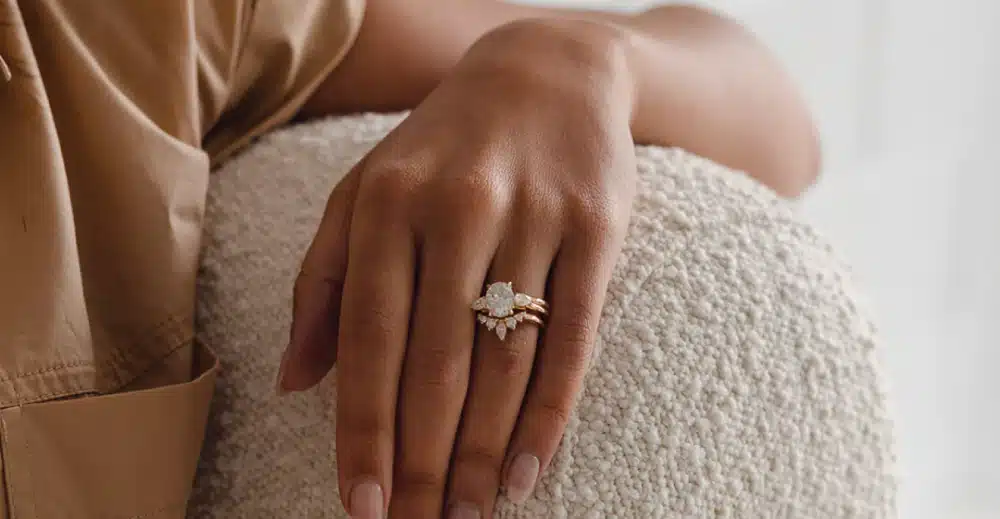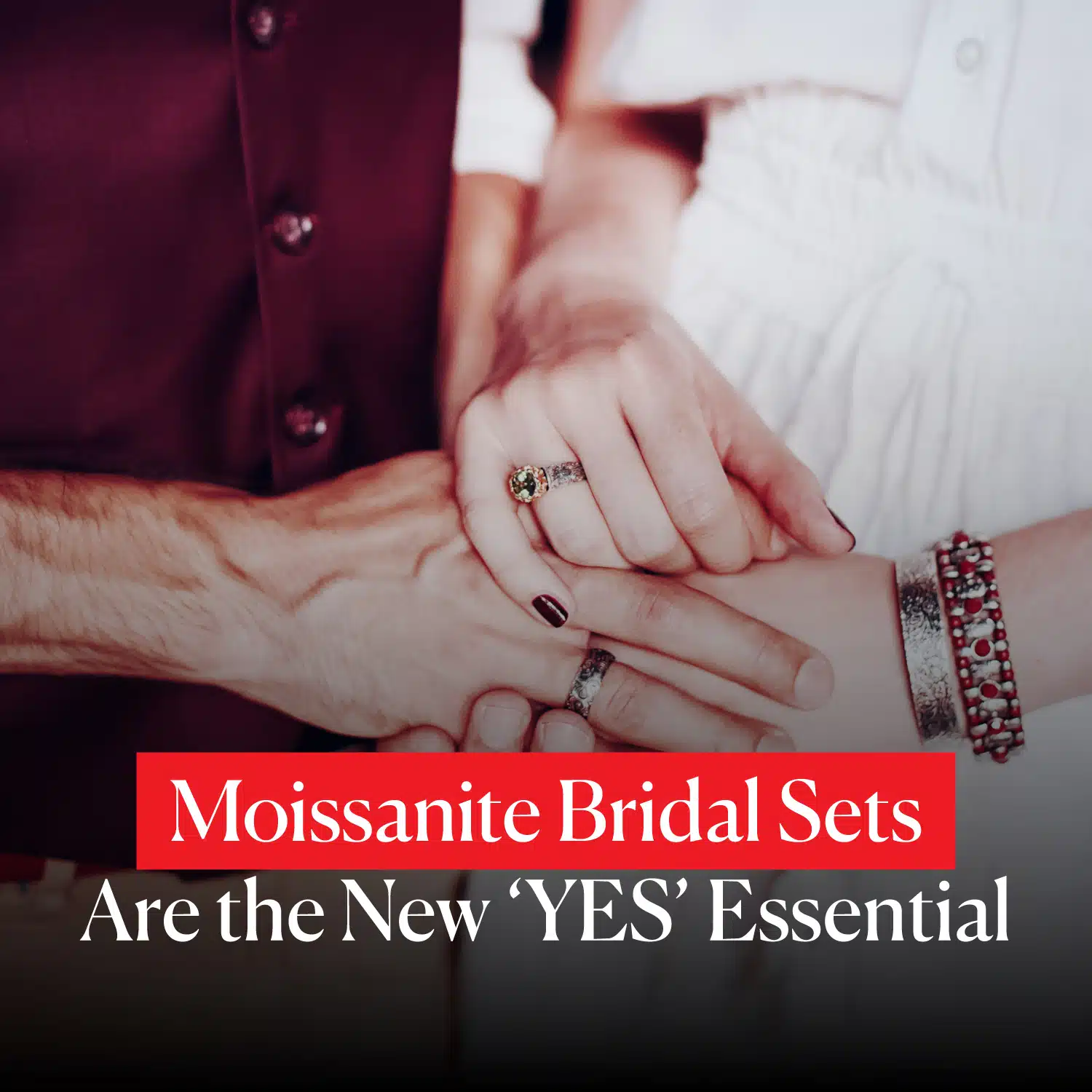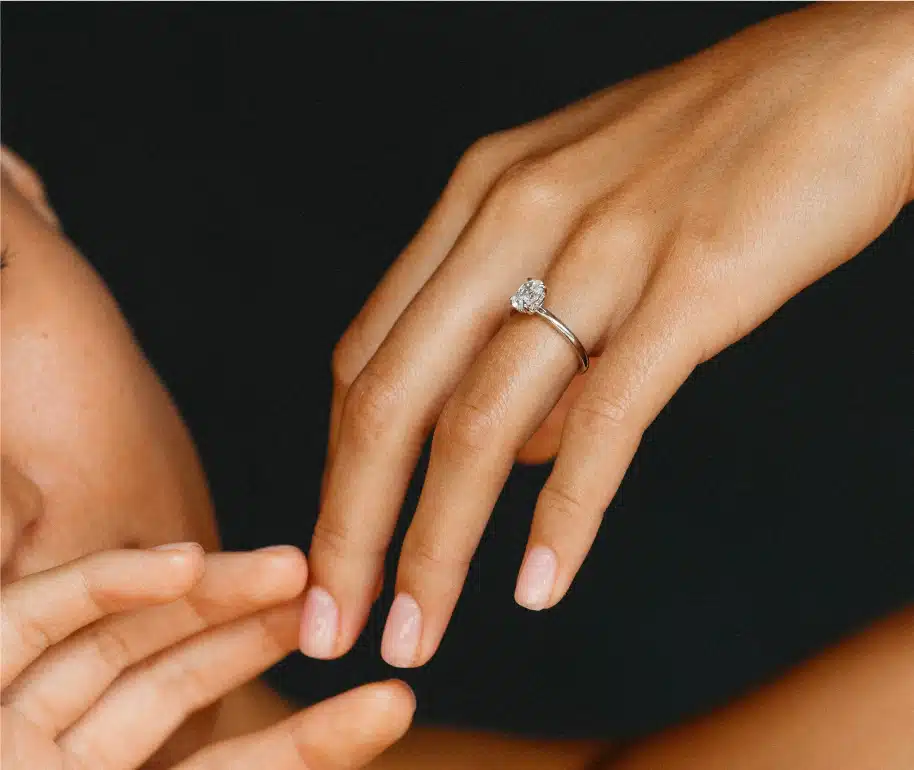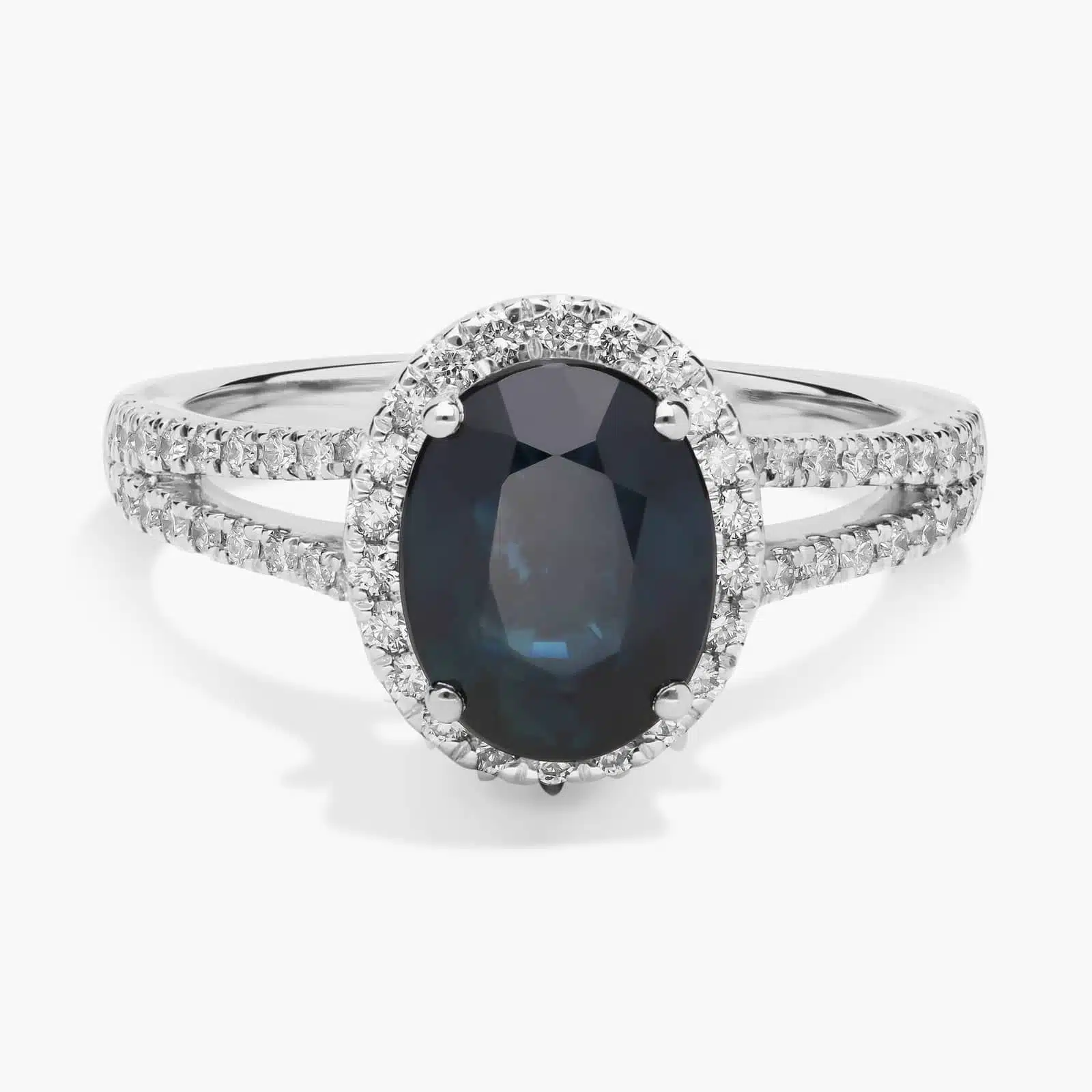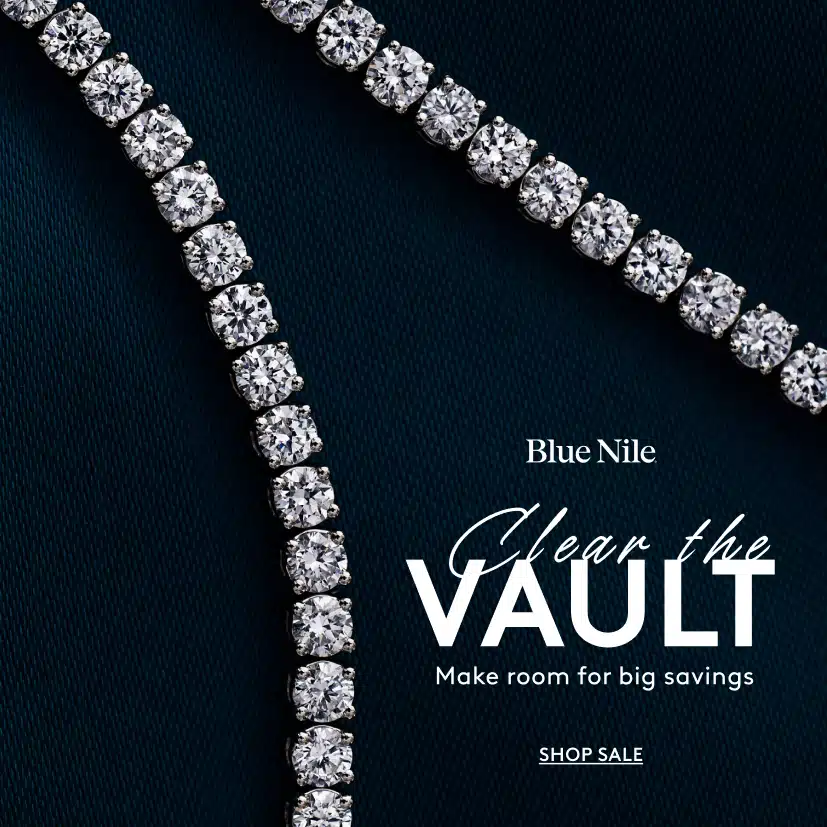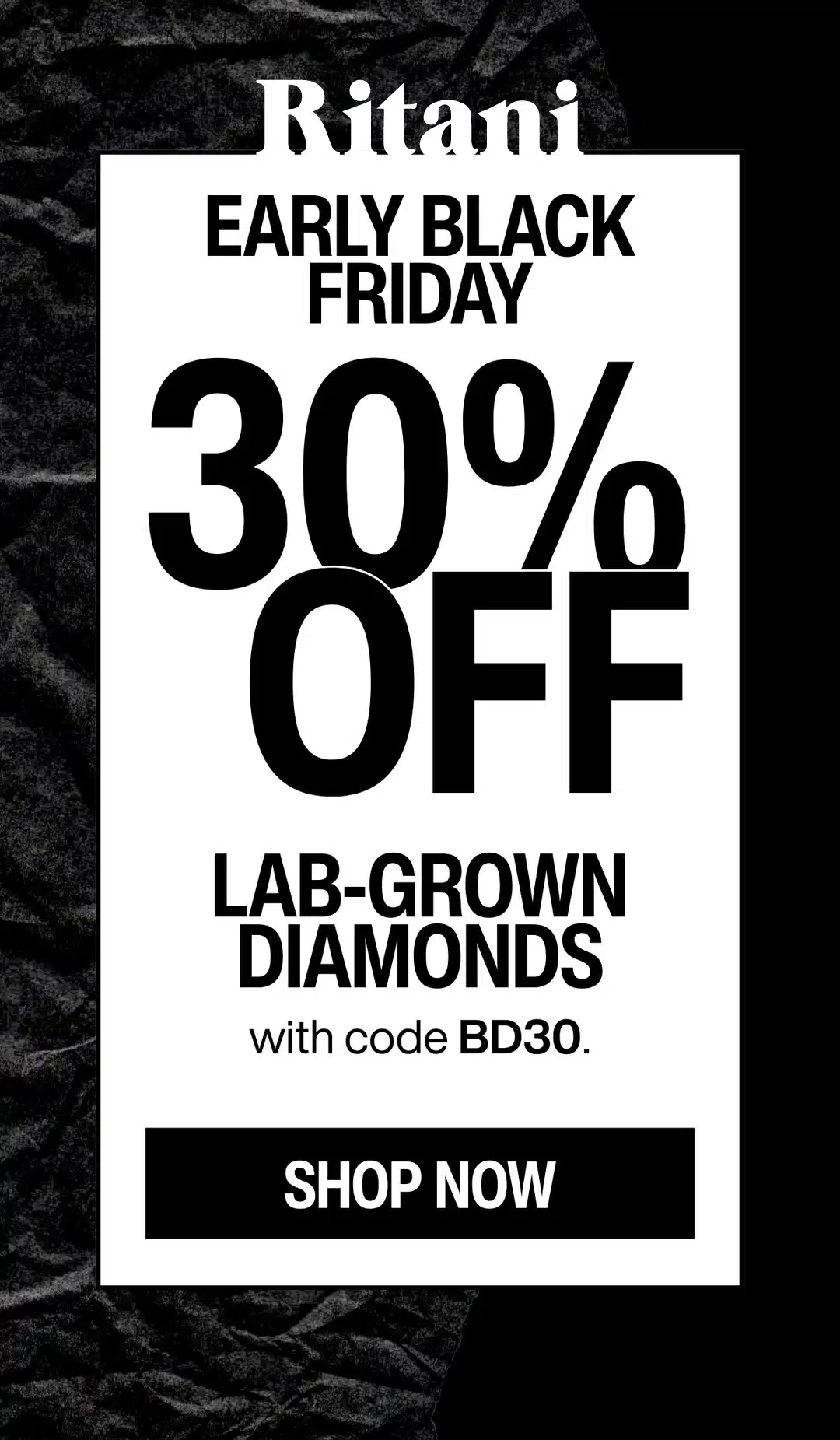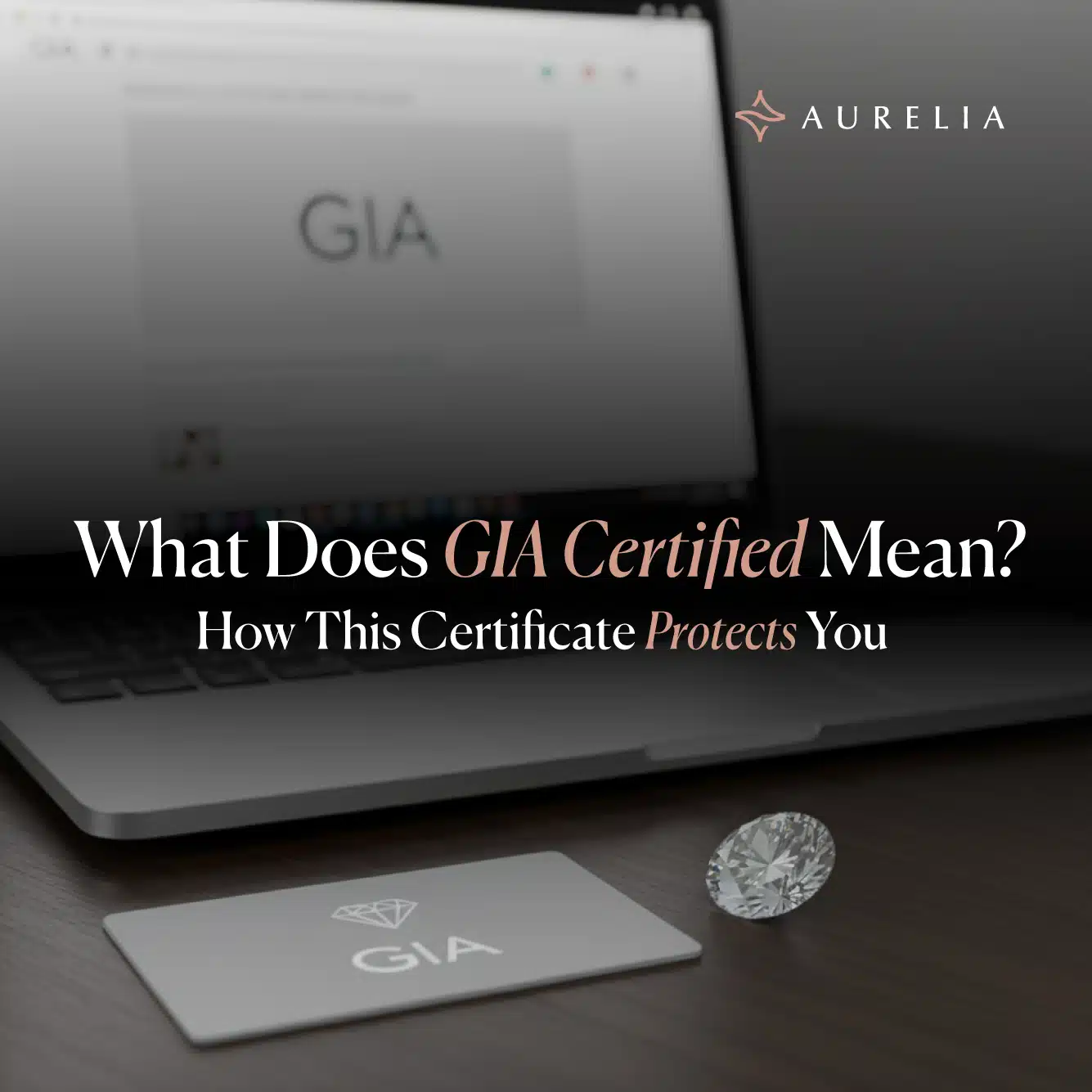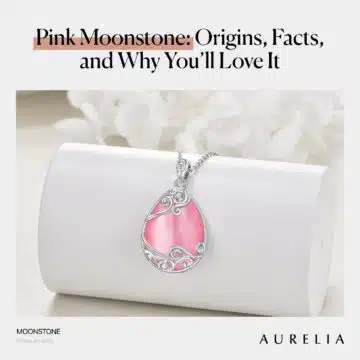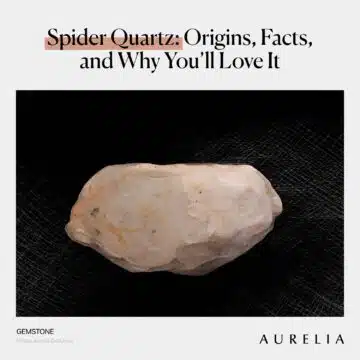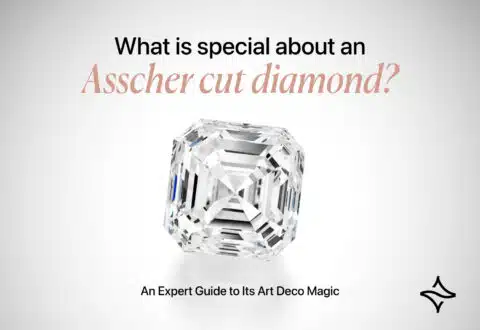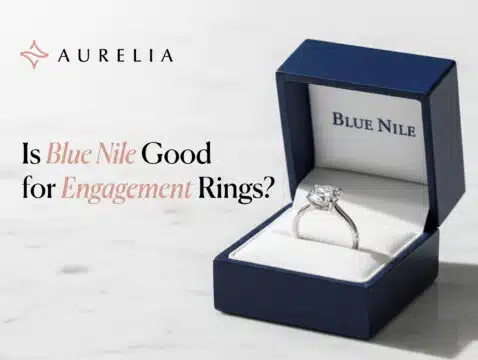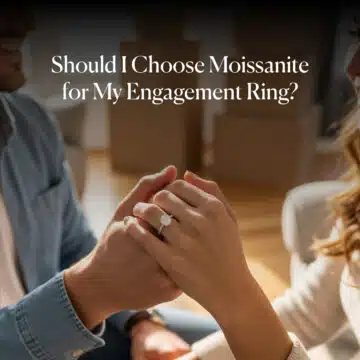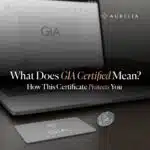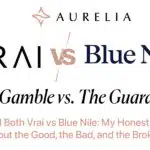For anyone who wants to buy a diamond with total, unshakeable confidence, the answer to what does gia certified mean is simple: it is everything. It is a non-negotiable, ironclad guarantee that the diamond you’re buying is exactly what the seller claims it is.
It is your ultimate financial shield, the single most important piece of paper in the entire jewelry world, and the only thing that separates a smart investment from a terrifying gamble. It is, and always will be, my #1 rule for buying a diamond.
A Reader Asks: Why Are You So Obsessed with GIA Certificates?
Hi Mehedi,
I’ve been following your blog for a while now and you’ve helped me so much in my search for an engagement ring! I’m getting close, but I keep getting stuck on one thing you always talk about: “GIA certification.”
I’ve found two diamonds online that look almost identical, but one with a GIA certificate is almost $1,000 more expensive than one without. A local jeweler even told me his in-house appraisals are just as good.
So, my question is: what does gia certified mean, really? And is it actually worth the extra money, or is it just a brand name you’re paying for? I trust your opinion more than anyone’s.
Thanks for everything,
— David, from Chicago, IL
Diamond IQ Test: Natural or Lab-Grown?
Two identical diamonds: GIA Certified, 1.51ct, D Color, VVS1, Ideal Cut. One is natural ($16,530), the other is lab-grown ($2,390). Choose the diamond you like better and see if you can match it to its origin.
Why a Jeweler Calls It a “Report” (And Why That Protects You)
David, you have just asked the single most important question in the entire world of diamonds. The answer is wrapped up in a secret that jewelers and gemologists have known for decades. It’s a secret hiding in one tiny, crucial word that separates the insiders from everyone else.
And understanding this one word is the key to unlocking why a GIA-graded diamond is the only smart choice you can make.
So, let’s pull back the curtain and talk about the difference between a “Certificate” and a “Report.”
Deal Alert: Elevate your design. Get up to 30% OFF engagement ring settings at Blue Nile !
| Pro Tip: See every detail with 360° HD videos available at James Allen .
A Lesson from the Reddit Trenches: The Insider’s Language
This “secret” was actually summed up perfectly in a brilliant, candid comment I saw on a Reddit forum where gemologists were talking amongst themselves.
One user, Fun_Bit7398, dropped this pearl of wisdom:
“Reports” for industry folk. “Certificates” for the Muggles.
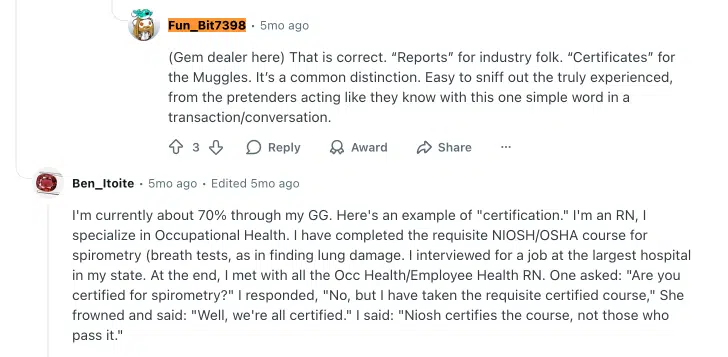
At first glance, that might seem a little arrogant, but I promise you it’s not. It’s the most important distinction in the entire diamond world. When you hear the question, “what is a GIA certificate,” an expert like me automatically translates that to “GIA Grading Report.”
And that one-word difference isn’t just semantics; it’s the entire foundation of their trustworthiness, and it’s what protects your wallet.
The “Certificate of Authenticity”: A Seller’s Promise (And Its Bias)
First, let’s talk about what a typical “certificate” is. When you buy a luxury watch or a designer handbag, it often comes with a glossy, embossed “Certificate of Authenticity.”
This document is created and issued by the company that made the product. It is a promise from the seller to you, the buyer, that what you are getting is genuine.
Now, think about the local jeweler who told you his “in-house appraisals are just as good.” He is offering you a certificate of authenticity on his own product.
This creates a fundamental, unavoidable conflict of interest.
- Who creates it? The person selling you the diamond.
- What is its purpose? To help make the sale.
- Is it biased? It has to be. The seller financially benefits from giving the diamond a higher grade.
A seller’s “certificate” is a marketing document. A GIA Report is a scientific one.
The GIA Grading Report: An Unbreakable, Unbiased Fortress of Facts

Now, let’s talk about the GIA, or the Gemological Institute of America. It’s crucial to understand what GIA stands for, because their mission is everything. The GIA was founded in 1931 with one singular purpose: to protect the public by providing unbiased, scientific standards for understanding gemstones. They are a non-profit educational and research institute.
They do not buy, sell, or trade diamonds. Their only “product” is the truth.
This is the core of what GIA certified means. It means your diamond was sent into a fortress of anonymity and science, where:
- All Bias is Erased: When a diamond arrives at the GIA lab, it is stripped of all identifying information. The grader has no idea if it came from Tiffany & Co. or a small-time dealer. It’s just a number.
- It’s Graded by a Team: A single diamond is graded by multiple GIA gemologists independently. Their grades must align before the final report is issued, ensuring consistency.
- The Report is Verifiable: Every GIA report has a unique number. You can go to the GIA’s public website, perform a Gemological Institute of America report check, and see the digital copy of the report for yourself. This is your ultimate protection against fraud.
The GIA isn’t promising you anything. They are giving you a sheet of cold, hard, scientific facts.
| “Certificate” (from a seller) | GIA Grading Report | |
| Who Issues It? | The person selling the stone. | An independent, non-profit lab. |
| Their Goal? | To help sell the diamond. | To provide objective, scientific data. |
| Your Role? | You have to trust their promise. | You get to verify the proof. |
“Grade Inflation”: The Million-Dollar Lie a GIA Report Prevents
So, what does this all mean for your wallet? The GIA report is your ultimate shield against the diamond industry’s dirty little secret: “grade inflation.”
This is the exact reason you, David, saw two “identical” diamonds with a $1,000 price difference. The uncertified diamond was almost certainly not the same quality as the GIA stone. It was a lower quality diamond whose grades were “inflated” by the seller.
Let’s make this brutally clear with an example. You’re shopping for a stunning, classic ring.
- The Ring at Blue Nile: You find a beautiful 1.50 Carat, G-Color, VS2-Clarity Diamond, and its GIA report is available right on the page. The price is $10,700.
- The Ring at “Local Jeweler X”: You may find a ring that the jeweler tells you is also a G-Color, VS2-Clarity. His in-house “certificate” says so. The price is only $8,800.
You think you’re saving a thousand dollars. But what you don’t know is that if that local jeweler’s diamond were sent to the GIA, their strict standards would likely reveal it is actually an I-Color, SI1-Clarity stone—a diamond that is only worth about $7,000 on the open market.
You didn’t save $1,000. You just overpaid by $1,800.
This is why the answer to “is GIA certification good?” is a resounding, thundering YES. The small premium you pay for a GIA-graded stone isn’t for a “brand name.” It is the fee you pay for the unbreakable insurance that protects you from being ripped off.
The GIA grading report cost is the best money you will ever spend in this process. It is the only thing that ensures the other 4 Cs, which you can study on our Diamond Grading Chart, are real.
It’s the very reason that the top retailers I recommend, like those in our Best Places to Buy Engagement Rings Online guide, build their entire business around this single source of truth.
How the GIA Report Stops You From Being Ripped Off
David, your question about the $1,000 price difference is the key to this entire puzzle. The answer is that you weren’t looking at two “almost identical” diamonds. You were looking at a proven, high-quality asset versus a complete and total gamble.
Think of a GIA report not as a boring piece of paper, but as your personal, ironclad financial shield. Every single section of that report is designed to protect your investment. Let me put on my jeweler’s loupe and walk you through how this shield works, piece by piece.
The Cut Grade: Your Shield Against a “Dud” Diamond
Let me be blunt: Cut is the only “C” that truly brings a diamond to life. It’s the engine of your ring. You can have a big, colorless, flawless stone, but if it has a poor cut, it’s just a lifeless, glassy-looking rock.
A “dud” is a diamond with a “Fair” or “Good” cut grade. Its facets have been cut at the wrong angles, meaning when light enters the stone, it doesn’t bounce around and explode back to your eye. It just leaks out the sides and bottom like a bucket full of holes.
- The Look: It will appear dull, dark, and smaller than its carat weight suggests.
- The Value: It is significantly less valuable, no matter how good its other grades are.
When a GIA report says “Cut: Excellent,” it is the most powerful promise in the entire diamond world. It’s a guarantee from the world’s strictest authority that your diamond has been crafted with mathematical precision to be a brilliant, fiery supernova of sparkle.
It’s the reason a GIA Excellent 1 Carat Diamond will look a million times better than a non-GIA “Excellent” 1.2 carat stone. To truly understand why this matters more than anything else, you must read my complete Diamond Cut Chart guide.
The Color & Clarity Grades: Your Shield Against “Grade Inflation”
This is where the GIA report saves you thousands of dollars. It protects you from the industry’s dirtiest little secret: “grade inflation.” This is the heart of why your jeweler’s uncertified stone was $1,000 cheaper.
Imagine your local jeweler shows you a beautiful diamond he calls a “G-Color.” It looks great in his store, under those perfect, dazzling lights. He’s asking $7,000 for it. You then go to Blue Nile and find a GIA-certified G-Color Diamond with the same specs for $8,000. It seems like the local jeweler is offering a great deal.
But he’s not. In all likelihood, if you sent that jeweler’s diamond to the GIA, their strict, unbiased standards would reveal it’s actually an I-Color Diamond, a stone that is two full grades lower and only worth about $5,500.
You didn’t save $1,000. You just got tricked into overpaying by $1,500.
| Diamond “Grade” | The GIA-Certified Price | The Uncertified Price (Inflated Grade) | Your Financial Loss |
| G-Color, VS2 | $8,000 | $7,000 | You think you saved $1,000 |
| I-Color, SI1 | $5,500 | The diamond’s actual grade. | You just overpaid by $1,500. |
This is why the gia certificate diamond price is what it is. That “extra cost” is your insurance premium. The GIA report is the only thing that guarantees the grade is real, and it protects you whether you’re buying a flawless D-Color or a savvy VS2-Clarity stone. My Diamond Color and Clarity Chart shows you exactly how much these grades impact price.
The Plot & Proportions: Your Shield Against Hidden Flaws
Now we get to the advanced level, the part of the GIA report that separates the amateurs from the pros: that strange-looking map of the diamond.
That diagram, called a “clarity plot,” is your diamond’s unique fingerprint. It’s a map created by a GIA gemologist that shows the exact location, size, and type of every inclusion inside your stone.
- Red Marks: These are internal characteristics (inclusions).
- Green Marks: These are external characteristics (blemishes).
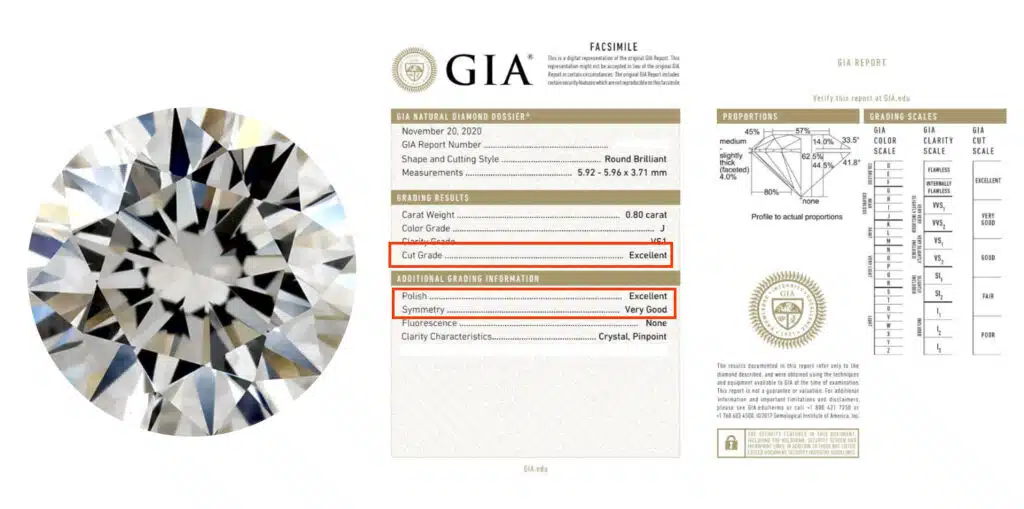
This map is your ultimate guide to the diamond’s soul. For anyone who asks “what does GIA stand for,” this level of detail is the answer. It stands for total, obsessive transparency.
This is where the GIA report becomes an incredibly powerful interactive tool. Here’s the secret strategy that lets you become the expert:
- Examine the Plot: You open the GIA report for a stunning 2 Carat Princess Cut Diamond Ring on James Allen. You see a small red mark under the main table facet.
- Go to the Video: You then open the 360° HD Video.
- Find the Flaw: You spin the diamond and zoom in on that exact spot, and you see that the inclusion is a tiny white “feather” that is completely invisible to the naked eye.
In five minutes, you have just done what only a master jeweler could do a decade ago. You have used the GIA’s map and the retailer’s technology to verify for yourself that the diamond is perfectly “eye-clean.”
This is a level of confidence that is simply priceless, and it’s why my main James Allen Review praises their system so highly. It’s the ultimate combination of science and sight.
GIA vs. IGI vs. AGS vs. “The Others”: A Jeweler’s Brutally Honest Tier List
David, your local jeweler’s claim that his “in-house appraisals are just as good” as a GIA report is the single most dangerous piece of misinformation in the entire diamond industry. And it’s exactly why we need to have this conversation.
Welcome to the Wild West of diamond grading. There are dozens of labs out there, all producing official-looking pieces of paper. But as someone who lives and breathes this business, I can tell you with absolute certainty: they are not created equal. Not even close.
To save you from a catastrophic mistake, I’ve created my personal “Jeweler’s Tier List.” This is the unfiltered, behind-the-counter truth about who you can trust, who you should be wary of, and who you should run from.
| Lab | Tier | Mehedi’s Unfiltered Opinion |
| GIA | S-Tier | The gold standard. Non-negotiable for natural diamonds. Period. |
| AGS | A-Tier | Very reputable, scientifically rigorous. Merged with GIA in 2023. |
| IGI | A-Tier | The leading, trusted authority for grading lab-grown diamonds. |
| GSI, HRD | C-Tier | Known for inconsistencies. I approach with extreme caution. |
| EGL | F-Tier | Notorious for “grade inflation.” A deal-breaker. I advise against. |
| In-House Reports | FAIL | A direct conflict of interest. An absolute, unequivocal “no.” |
Now, let me break down exactly what those tiers mean for you and your wallet.
The S-Tier & A-Tier — Your Champions of Trust
These are the labs that have earned the industry’s respect through decades of consistency and integrity. When you buy a diamond with one of these reports, you are buying with confidence.
The GIA is not just another lab; it is the authority. They invented the 4 Cs grading system that the entire world now uses.
- Why they’re the best: They are a non-profit, educational institute with famously strict and consistent grading standards.
- My rule: For a natural diamond, a GIA report is the only option I will ever recommend. It is the gold standard, full stop. Their reputation is the bedrock of what makes a company like Blue Nile trustworthy.
Read Our 5-Star Blue Nile Review
Check our comprehensive Blue Nile review to learn why we rated Blue Nile 5 stars for their exceptional quality and value.
The AGS has a legendary reputation for its deeply scientific and technical approach, especially when it comes to Cut grading for fancy shapes like the Cushion Cut Diamond.
- Their unique strength: They used a 0-10 scale for cut, with “0” (Ideal) being the pinnacle of perfection.
- The ultimate endorsement: In 2023, the AGS grading lab officially merged with the GIA, a move that cemented its status as a top-tier, trustworthy authority. You can learn more in my AGS Grading System guide.
While GIA is the king of natural stones, IGI is the reigning champion of the lab-grown world.
- Their expertise: The IGI was one of the first major labs to take lab-grown diamonds seriously, developing a rigorous, consistent grading system for them.
- The modern standard: Today, an IGI report is the gold standard for verifying the quality of a lab-grown diamond. It’s the report you’ll find on the vast majority of stones sold by top online jewelers, and it is absolutely a certificate you can trust. Our deep-dive on IGI Diamond Certification gives you the full picture.
Deal Alert: Elevate your design. Get up to 30% OFF engagement ring settings at Blue Nile !
| Pro Tip: See every detail with 360° HD videos available at James Allen .
The C-Tier — Enter the “Buyer Beware” Zone
This is where we leave the world of consistent A+ students and enter the world of C- and B- students. These labs, including GSI and HRD, are not necessarily “scams,” but they are known within the jewelry trade for having looser standards and, more problematically, being inconsistent from one report to the next.
A diamond graded by one of these labs might be a good deal, or it might have a grade that’s been bumped up a notch or two. It’s a gamble. My advice: unless the price is so unbelievably low that it accounts for the risk, I would stick to the top-tier labs.
The F-Tier & Below — The “Hard No” Zone
Now we arrive at the final category. And my advice here is not a “recommendation”; it is a warning.
Years ago, EGL had a reputation for being fast and loose with their grading, a practice known as “grade inflation.” They were notorious for grading diamonds two, three, or even four grades higher than the GIA would have.
A diamond that EGL called a G-VS2 might be a J-SI2 in reality—a catastrophic difference in value. The brand’s reputation was so damaged that no serious jeweler in the United States gives an EGL report any credibility. If you see one, it should be a deal-breaker. Walk away.
David, this is what your local jeweler offered you. And I want to tell you, with all the sincerity of a friend trying to stop another from making a huge mistake, that an in-house report is not just a gamble; it is a guaranteed losing bet.
- It is not an “appraisal.” It is a sales document created with the sole purpose of selling you that stone.
- It is the definition of a conflict of interest. It is letting the fox guard the henhouse. It is asking the car salesman to be the chief mechanic and the safety inspector.
- It has zero credibility, value, or authority outside the four walls of that specific store.
If a seller’s primary proof of quality is their own piece of paper, that is not a red flag; that is a blaring, five-alarm fire. Run, do not walk, out of that store and never look back.
GIA and Lab Diamonds: The New Reality You Must Understand

Okay, let’s pause. I need to be brutally honest with you, because the diamond world has just been hit by a seismic shift, and the old rules no longer apply. For years, I, like every jeweler, told you that GIA was the undisputed king of diamond grading for all stones.
That truth has changed.
In a controversial move, the GIA has effectively abdicated its throne in the lab diamond world. They have fundamentally altered their grading reports for lab-grown stones in a way that, in my professional opinion, harms you, the consumer. It is a change you absolutely must understand before you spend a single dollar.
The Old Promise vs. The New Reality: A Side-by-Side Look

For decades, a GIA report was a diamond’s “passport.” It was a detailed, specific, and universally understood document that gave you, the buyer, all the power. The new “Quality Assessment” for lab diamonds takes that power away.
Let’s look at what has been lost.
| Feature | The “Old” GIA Report (Your Passport) | The “New” GIA Assessment (A Blurry ID) |
| Color Grade | A specific letter grade (D, E, F, G…) | A vague “Premium” or “Standard” tier. |
| Clarity Grade | A specific grade (VVS1, VS1, VS2…) | Also just “Premium” or “Standard.” |
| Value Hunting | You could find a G-VS2 for less than a D-VVS1. | Impossible. Specific value is now hidden. |
| Your Power | You had all the data to be an expert. | GIA asks you to trust their broad labels. |
Deconstructing the “Premium” and “Standard” Tiers: Why Vague is Dangerous
This new system is built on two broad, and in my opinion, deeply unhelpful categories. GIA’s official reasoning is that it “simplifies” the process. As your friend in the business, I’m telling you it simplifies things for them, not for you. It creates an information vacuum.
To be called “Premium,” a lab diamond must be D-Color and at least VVS-Clarity. While this sounds exclusive, it hides crucial value.
For example, a D-VVS2 and a D-Flawless diamond will both be labeled “Premium,” but there can be a 15-20% price difference between them. The new report erases that distinction.
This is the heart of the problem. Over 95% of the lab diamonds people actually buy fall into this category. And it is so broad that it is almost meaningless.
Let me show you a real-world disaster scenario this creates:
- Diamond A: A spectacular E-Color, VVS1-Clarity stone with a Triple Excellent cut. A truly top-tier lab diamond.
- Diamond B: A respectable J-Color, VS2-Clarity stone with a “Very Good” cut.
Under the old system, you could clearly see that Diamond A was in a completely different league of quality and price. But under the new system? GIA gives both of these wildly different diamonds the exact same grade: “Standard.”
It’s a system that punishes savvy shoppers and obscures the very details you need to find a great value, a strategy I break down in my guide to finding the best diamond clarity.
The Crown is Abdicated: Why IGI is Now the King of Lab Diamond Reports
So, if GIA has walked away from providing the detailed reports that you, a smart buyer, rightfully demand, who do you trust now?
The answer is simple: you trust the lab that has been the established leader and gold standard in this space all along. The IGI (International Gemological Institute).
While the GIA was hesitating, the IGI embraced the lab diamond revolution. They developed the rigorous, detailed, and reliable reports that the market needed. An IGI certificate for a lab-grown diamond gives you everything the new GIA report takes away:
- A specific letter grade for Color.
- A specific grade for Clarity.
- A full, detailed breakdown of Cut, Polish, and Symmetry.
- A detailed plot map of the diamond’s inclusions.
This new reality is why our in-depth guide to IGI Diamond Certification is now one of the most important articles on our site.
My Final Word as Your Jeweler: The New Rulebook
This situation can seem confusing, but I’m going to make the new rulebook as simple and as clear as possible for you.
The new rule is: the lab determines the standard.
- If you are buying a natural, mined diamond, a GIA report is still the undisputed king. It is the only report I would trust. Period.
- If you are buying a lab-grown diamond, an IGI report is now the superior choice. It provides the specific, actionable data you need to be an informed, confident buyer.
The GIA has not killed the lab diamond market; they have simply made IGI the undisputed champion within it. This is a crucial new reality that we will be incorporating into our all-encompassing Diamond Buying Guide. The rulebook has changed, and as smart shoppers, we will change with it.
The Questions You’re Probably Asking Yourself Right Now
Alright, David, we’ve gone deep into the “why” behind my GIA obsession. But I know that when you’re this close to a decision, the big picture breaks down into a handful of very specific, very practical questions.
These are the questions I get in my inbox every single day from savvy buyers just like you. Let’s tackle them right now, with the direct, no-nonsense answers you deserve.
The Only “C” That Truly Protects the Other Four
So, let’s bring this all home. We started with David’s brilliant, honest question from Chicago: “Is a GIA certificate really worth the extra money?”
And after all the analysis, the deep dives into industry secrets, and the brutal honesty about “grade inflation,” I can tell you that my answer is an unequivocal, passionate, and absolute YES.
The premium you pay for a GIA-graded diamond is not for a brand name. It is for a fact. In a world of subjective beauty and persuasive sales pitches, the GIA report is the only anchor of objective truth. It’s the only thing that guarantees that the stunning diamond you see is the stunning diamond you are actually getting.
For decades, we jewelers have taught the world about the 4 Cs: Cut, Color, Clarity, and Carat. But today, I’m telling you there is a 5th C, and it is the most important one of all: Certification.
Because without the right certification, the other four Cs are nothing more than a marketing story. The GIA report is the unbreakable shield that protects your investment in all the others. It is the guarantee. It is your peace of mind. It is, and always will be, my #1 unbreakable rule.
Continue Your Research Journey
You’ve just completed the most important lesson in your entire diamond education. You now hold the master key. You understand that the GIA report isn’t just a piece of paper; it is your ultimate financial shield.
The exciting journey isn’t over, though. It’s just beginning. Now that you know what to look for, your next step is to take this newfound power and apply it in the real world. These are the hand-picked guides I’ve written to help you become the smartest, most confident buyer in the room.
First, See This Knowledge in Action: The Head-to-Head Showdowns
Now that you understand the power of certification, watch how it becomes the deciding factor in my bare-knuckle comparisons of the biggest names in the industry.
- See how GIA-first Blue Nile stacks up against the old-school mall jeweler in Zales vs Blue Nile: A Jeweler’s Unfiltered Comparison.
- Learn the ultimate insider’s strategy for combining the best of two worlds in my groundbreaking guide, The Unspoken Truth About Ritani vs James Allen.
Next, Master the Nuances of Different Diamond Shapes
You know what makes a diamond good. Now let’s find the shape that speaks to your heart.
- For the lover of graceful, elegant curves: My definitive Pear-Shaped Diamond Ring Buying Guide.
- For the fan of bold, modern fire: The insider’s secrets to the Radiant Cut Diamond.
- For the truly unique and romantic soul: Everything you need to know about the Heart Shaped Diamond.
Finally, Get Answers to Your Most Pressing Practical Questions
Let’s get down to the brass tacks and prepare you for the final steps of your journey.
- You’re ready to buy, but you have no idea what she wants? Don’t panic. Read my guide: How to Find Out What Ring a Girl Really Wants.
- Thinking about the future? Learn the ins and outs of the upgrade process in my deep dive, How to Trade In Your Diamond Ring for an Upgrade.
- It’s the ultimate question: how much should you really be spending? I give you the real, no-nonsense answer here: How Much to Spend On a Wedding Ring.


